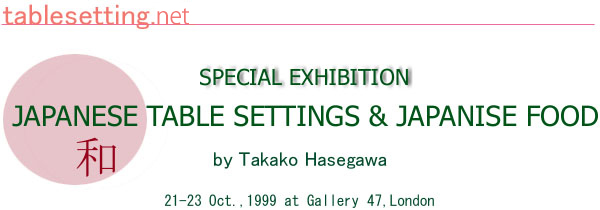
| INTRODUCTION |
|
Special Features of Japanese Food In Japan, which is an island country, various ingredients from the sea and mountains are available throughout the four seasons. Calling these "fruits of the sea and mountains" and attaching importance to the term "shun" meaning "in season", we have created a unique food culture that values the blessings of nature. With rice as its staple, Japanese cuisine is well balanced through the use of fish, meat and vegetables which are enjoyed as side dishes called "okazu".. Today, we have adopted and added various kinds of international cuisine to the okazu.. It is said that all we need to do in order to achieve a healthy and ideal diet is to consume more calcium, which is not abundant in Japanese food, through dairy products. Beginning and Ending of the Meal In Japan, we begin our meal by saying "itadakimasu" and end by saying "gochisosama". "Itadakimasu" expresses appreciation for the fact that one can eat and is similar to a prayer, while "gochisosama" is an expression of gratitude for having eaten. Japanese Tableware In the old days, our meals were served on individual small low tables called "ozen", and we ate while sitting on the floor (tatami). The tableware was relatively small and light as we held it with the left hand whilst using hashi (Japanese chopsticks) with the right. We now use western style tables and have adopted the western life style, where large serving dishes and bowls are also used. Various and different materials such as porcelain, pottery, glass, lacquer and bamboo etc, in various forms are used as tableware in accordance with the type of dishes. |


|
COPYRIGHTiCj2000 TABLE & FLOWER SCHOOL SEIJO ALLRIGHTS RESERVED HOMEPAGE Design : Kanami Misaki |